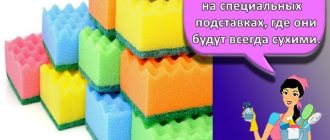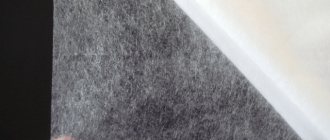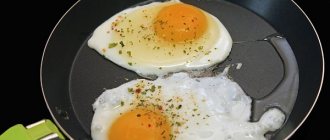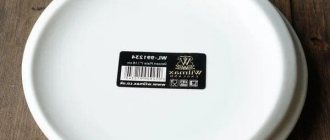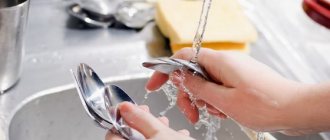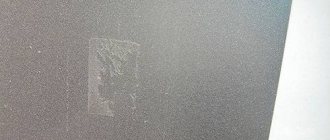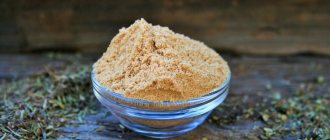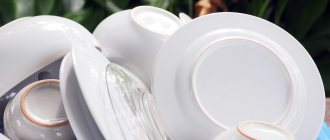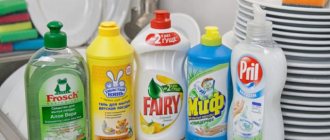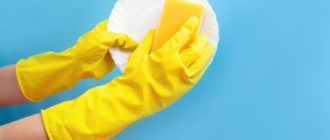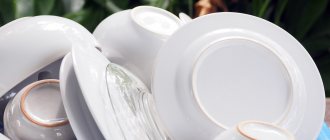Almost every family has antique and exquisite items made of porcelain, earthenware and ceramics. Often these are luxurious and original products that were inherited and have incredible family value. But such products are quite fragile, which often leads to catastrophic consequences.
A vase, figurine or dishes may break. And if the damage is not too serious, then you can try to restore the product yourself. Especially if the damaged item is valuable or beloved. This is where a completely logical question arises: how and with what to glue ceramics?
Features and properties of the material
The basic characteristics of the material from which this or that product is made will help you choose the right glue, and will also help you learn the features of proper care. Only knowledge of the features and properties of ceramics, porcelain, earthenware will help to carry out restoration quickly and restore normal appearance.
Ceramics
This is the most common material on the basis of which a variety of kitchen utensils, various decorative items, and original tableware are made. This material is so relevant due to its high heat resistance, increased strength, and most importantly, safety. In addition, ceramic products have a refined and original appearance.
Such products are made from clay substances and clay through specialized firing. Various additives, most often mineral, are used as additional components. To make the dishes more stable and retain their original properties and qualities for a long time, they are coated with glaze.
Porcelain
This is a specific type of ceramic. Such products are made on the basis of quartz, spar, and high quality white clay. The production process is based on sintering; strengthening components are necessarily added. After firing, the product receives a white tint.
If the layer is thin, then the structure is visible. At the same time, a ringing sound is formed upon contact and has high water resistance parameters. This material is used to produce exquisite figurines and original decanters, saucers, and cups.
Causes of cracks and breakages of ceramic and porcelain products
Despite their relative hardness, objects made from these materials often break. For such products, sometimes a point mechanical impact is enough for defects to appear on them.
Often the causes of breakdowns are:
- incorrect installation (applies to the sink);
- temperature changes;
- impacts of objects during their washing, falling due to the carelessness of the owner, etc.
Cracks can appear in various situations. But most often, dishes, figurines and other products break due to improper use and careless handling.
How to choose glue for ceramics?
The range of adhesive products is very large, but finding and choosing high-quality glue for restoring ceramic products is not so easy. Most often you can find glue that is used for ceramics and earthenware, for gluing decorative items, ceramic dishes, etc.
Quite often, these two materials are classified as one group, since the adhesive composition for one and the other can be used the same, so it is considered universal. This is because each process requires its own parameters, and as a rule there are not so few of them.
Basic parameters for choosing glue:
- Connection strength parameters.
- Features of preparing the material before using glue.
- Parameters of strength and resistance to chemicals and other liquids.
- Color. It is very important that it matches the color scheme of the product that will be restored.
- Application conditions and environmental parameters.
- The maximum and minimum temperatures at which the glue will retain its connecting properties and qualities.
One of the most important factors is the water resistance parameter, especially when it comes to the restoration of dishes. But most often, when choosing, people make the mistake of evaluating solely the parameters of the strength of the connection. If there is a need to increase the lost area of the product, then it is very important to choose the right glue color.
How long does it take for glue to dry?
For compositions from many well-known manufacturers, the setting time is about 5-10 seconds. But complete drying begins only a few hours after the end of the gluing work. In this regard, it is not recommended to use the restored product for some time in order to prevent the glued fragments from moving from the original fixed position.
Important nuances
If defects appear on porcelain dishes or other products, you can do the following:
- Find a repair specialist. Specialized studios with such services are available only in large cities. The work of a good craftsman is highly valued, so the cost of his services may surprise you.
- Do the repairs yourself. To do this, you need to find out information about how to glue porcelain, what materials to use and how to carry out the procedure.
Previously, it was almost impossible for non-specialists to carry out repairs on their own, but now it is easy to find the necessary information about different techniques. Even if the product seems hopelessly damaged, you can try to restore it.
How to glue ceramics to ceramics?
There is a specialized glue for ceramic products. There are quite a few companies that actually provide an excellent product with unique setting speed characteristics. The use of glue makes it possible to subsequently operate the products in difficult conditions.
"Second"
Differs in properties of instant setting. Transparent, reliably connects any parts of ceramic products while forming a strong connecting seam.
You can buy this glue at any store. Convenient packaging in the form of a small tube with a sharp tip allows you to precisely apply the glue to the desired areas of the product. Application is very simple and measured.
"Super Moment"
This glue is considered universal and is also suitable for gluing ceramic products. There are a number of unique characteristics that have made the glue popular and relevant.
The main advantages include:
- It is economical in consumption.
- It has high resistance to high and low temperatures and is moisture resistant.
- Almost instant grip.
"Use of PVA glue"
This glue is most often used for food products that are planned to be used in the future. Since its composition is more environmentally friendly than its analogues, many people use it for gluing kitchen utensils. You can glue products whose surface does not have an additional varnish coating. From our review you can learn how to make PVA glue at home.
After restoration, it is recommended to additionally treat the product with several layers of varnish to create increased strength and reliability.
What to look for when choosing
In each individual case of construction work for high temperatures, it is necessary to purchase a specialized adhesive composition. When choosing, it is important to study the composition and properties of the product.
It is recommended when purchasing products:
- study where heat-resistant adhesive can be used and give preference to universal compositions that are suitable for interior and exterior work;
- decide on the manufacturer: by choosing high-temperature adhesive from a trusted brand, you can count on a decent result upon completion of repair or construction work;
- clarify the purpose of the composition: whether heat-resistant cold welding, brick laying or furnace lining will be carried out; in each individual case it is necessary to select an adhesive with the correct properties;
- study the composition, characteristics, as well as material consumption per 1 m 2; for example, when repairing closed fireboxes, it is important to select an adhesive that will be resistant to temperatures of 300 degrees;
- take into account the cost that high-temperature adhesive provides: the price of the building material is affordable, and you should not choose the cheapest product (since the components included may be of poor quality).
How to glue porcelain?
To restore products made from porcelain, a large number of adhesive compositions are produced that can firmly glue broken fragments together. In most cases, after repair, you can continue to use the item for its intended purpose.
"STANGE"
Universal waterproof adhesive "Stange" is made specifically for gluing porcelain objects. The solution forms high adhesion and is resistant to atmospheric influences. Its short setting and drying time makes it easier to glue small parts.
"Cosmofen ca-12"
"Cosmofen SA-12" is a colorless one-component liquid composition with low viscosity. After reuniting the parts, gluing is formed almost instantly, and the seam created is resistant to external influences and any temperature changes.
The composition is used both for domestic use in the household and for large-scale industrial purposes. The glue is universal and can be used in the process with a large number of types of porcelain. Excellent for joining small parts, for example, for express fixation.
It is not advisable to use this type for substrates with a porous structure, products in an aqueous environment, and in cases where it is necessary to make a plastic adhesive seam. But they can glue chemically coated and painted surfaces on an aluminum base.
"RAPID"
The product produced under the Rapid brand is actively used to work with a huge number of materials, which include porcelain. The solution is characterized by a pronounced odor, which disappears only a few minutes after gluing. Endowed with instant grip, which helps when working with small parts.
“Rapid” is a fairly economical product; even a small tube lasts for a long time. It is packaged in tubes of various volumes, from which it is easy to squeeze out the required amount of solution.
What to look for when choosing
In each individual case of construction work for high temperatures, it is necessary to purchase a specialized adhesive composition. When choosing, it is important to study the composition and properties of the product.
It is recommended when purchasing products:
- study where heat-resistant adhesive can be used and give preference to universal compositions that are suitable for interior and exterior work;
- decide on the manufacturer: by choosing high-temperature adhesive from a trusted brand, you can count on a decent result upon completion of repair or construction work;
- clarify the purpose of the composition: whether heat-resistant cold welding, brick laying or furnace lining will be carried out; in each individual case it is necessary to select an adhesive with the correct properties;
- study the composition, characteristics, as well as material consumption per 1 m 2; for example, when repairing closed fireboxes, it is important to select an adhesive that will be resistant to temperatures of 300 degrees;
- take into account the cost that high-temperature adhesive provides: the price of the building material is affordable, and you should not choose the cheapest product (since the components included may be of poor quality).
Glue "Hercules"
Advice: Mixtures that focus on heat resistance are best used for bricklaying. For plastering a fireplace or stove, as well as external cladding, you should purchase a more plastic material.
How to bond ceramics?
Before you start gluing ceramic products at home, it is recommended to study simple rules.
The following simple conditions must be adhered to:
- All parts of the product that need to be restored should be collected. If the product was previously restored, then the remaining adhesive composition should be carefully removed from the surface with a knife.
- Parts should be washed in warm water. You can even use a special dish detergent to achieve perfect cleanliness. After this, you need to rinse the elements and allow the water to drain. It is not recommended to wipe to avoid excess lint on the surface, which could impair reliable adhesion. If desired, you can prime it, and you can find out how long the primer dries from our review.
- The parts should be laid out in such a way that at the time of restoration, when the glue has already been applied, there will be no difficulties in identifying the next element.
- All places where glue will be applied should be treated with white alcohol, acetone or solvent 646 (this will ensure maximum adhesion).
- The gluing areas are treated with glue, which is applied in an even and fairly thin layer. To apply, you can use an ear cleaning stick or a small brush.
- The first layer needs to be dried a little, then the second layer is applied and the connection is made. The parts of the product must be pressed tightly against each other and held for several minutes. The released glue residues are removed from the surface with a cloth.
- It is recommended to wait some time before starting to connect another part (so that the first one sticks well).
After gluing all parts, it is recommended to securely fix the product (in the correct position) and wait 1-3 days, after which you can start using it.
Method 2. Based on shellac and turpentine
Another option for gluing ceramics.
Ingredients:
- turpentine;
- light shellac.
Combine the ingredients and place the container over low heat. The mixture requires cooking until the shellac has completely melted. During preparation, the glue is constantly stirred until a homogeneous consistency is obtained. This composition takes longer to harden, so it can be prepared as a backup option. The mixture is allowed to cool and, divided into portions, placed in storage or used to treat cracks or chips in the toilet bowl.
As necessary, it is heated and applied in a thin layer to the surfaces to be bonded. As a result, the reinforced parts are compressed, which ensures their tight adhesion. The resulting glue residue should be wiped off immediately.
Basic tips and tricks
- Repaired products are not used for food, since exposure to some food components may lead to the release of toxic substances contained in the glue. It's bad for your health.
- It is best to work in ordinary rubber seals to protect your hands from possible cuts and other injuries.
- When gluing, it is recommended to use tweezers; it will help quickly connect small parts.
- Restoring items made of porcelain or ceramics is not at all difficult if you follow the instructions and algorithm described above.
Which lubricants are food grade?
Lubricants of various consistencies, sealants and other materials used in the food industry to prevent wear, leaks, and corrosion must be approved by the international non-profit organization NSF (The National Sanitation Foundation). The latter's activities are aimed at protecting the environment, preserving human health, and monitoring the safety of food and water. If NSF issues approval of any materials for food production, it means that they do not contain substances that, when in contact with consumer products, can cause chemical contamination and harm humans.
There are several types of food tolerances.
| Food approval | Characteristic |
| H1 | Most often, it is the NSF H1 approval that can be seen in the lubricant data sheet. This means that the composition is safe, but its content in the finished product should not exceed 0.001% |
| H2 | The presence of such a permit guarantees the absence of highly toxic elements in the lubricant, including lead, cadmium, nickel, antimony, however, the lubricant getting into products even in minimal quantities must be excluded |
| H3 | The abbreviation with "H3" indicates that the material is soluble in water |
| 3H | "3H" means that the lubricant can be used as a release agent for grills, pans and other elements of food equipment that have direct contact with food. |
| A7 | The group includes cleaners and polishes approved for use in food production |
Food-grade lubricants and sealants are obtained by thoroughly purifying base oils from all kinds of impurities.
Homemade adhesive solutions
You can make ceramic glue at home with your own hands. Here are some popular recipes.
Method 1
Mix egg white with plaster of Paris. Please note that after preparing the glue, you cannot tighten the repair - the resulting substance hardens very quickly.
Method 2
Dissolve casein in silicate glue or liquid glass.
Method 3
Prepare a saturated solution of aluminum alum and soak plaster in it. After a day, the composition must be dried, ground into powder and kneaded in water.
Method 4
Beat the egg white until foamy and leave for a day. Then add baking soda to it so that the consistency of the mixture is similar to dough.
Method 5
Grind dry chalk to a tooth powder and dissolve it in liquid glass (mass ratio 1:4).
Method 6
Mix casein, borax, water in equal parts, add 2 or 3 drops of formaldehyde. The glue can be used when it hardens - after 2-3 hours.
Method 7 (“food glue”)
- Take 100 g of slaked lime and sugar, mix with 1 liter of water.
- Place the mixture over low heat and cook for approximately 3.5 hours, without letting it boil.
- After cooling, leave for 2-3 hours, drain the water.
- Grind any tile adhesive, add to the mixture, stir.
- Leave for 12 hours. Use cold.
This composition is more complex than the previous ones, but it is considered the most effective. Unless otherwise stated in the recipe, all glues should resemble sour cream in consistency.
Application
In the food industry, adhesive and sealant are necessary for processing components of industrial equipment:
- fixing threaded connections;
- sealing pipes, flanges;
- fixing cylindrical assemblies, to which increased safety requirements apply;
- restoration of worn parts that do not yet need urgent replacement.
Adhesive sealants vary in composition, therefore, depending on the type of production, a more heat-resistant, moisture-resistant or other lubricant that meets safety requirements is selected.
